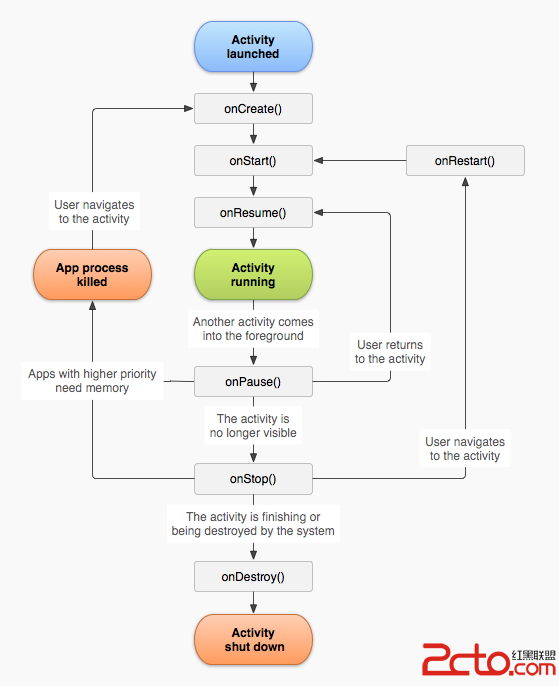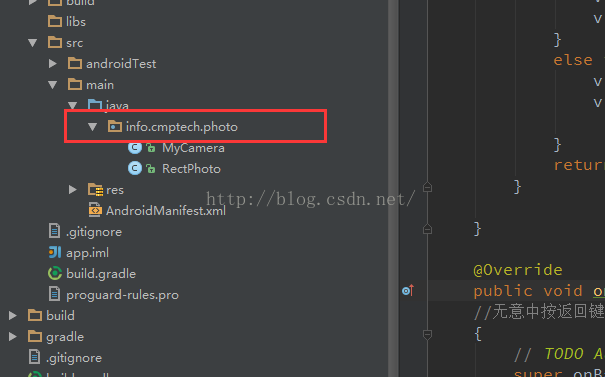一、方法
復制代碼 代碼如下:
/**
* 執行一個shell命令,並返回字符串值
*
* @param cmd
* 命令名稱&參數組成的數組(例如:{"/system/bin/cat", "/proc/version"})
* @param workdirectory
* 命令執行路徑(例如:"system/bin/")
* @return 執行結果組成的字符串
* @throws IOException
*/
public static synchronized String run(String[] cmd, String workdirectory)
throws IOException {
StringBuffer result = new StringBuffer();
try {
// 創建操作系統進程(也可以由Runtime.exec()啟動)
// Runtime runtime = Runtime.getRuntime();
// Process proc = runtime.exec(cmd);
// InputStream inputstream = proc.getInputStream();
ProcessBuilder builder = new ProcessBuilder(cmd);
InputStream in = null;
// 設置一個路徑(絕對路徑了就不一定需要)
if (workdirectory != null) {
// 設置工作目錄(同上)
builder.directory(new File(workdirectory));
// 合並標准錯誤和標准輸出
builder.redirectErrorStream(true);
// 啟動一個新進程
Process process = builder.start();
// 讀取進程標准輸出流
in = process.getInputStream();
byte[] re = new byte[1024];
while (in.read(re) != -1) {
result = result.append(new String(re));
}
}
// 關閉輸入流
if (in != null) {
in.close();
}
} catch (Exception ex) {
ex.printStackTrace();
}
return result.toString();
}
二、用途
執行Linux下的top、ps等命令,這些命令你也通過adb可以執行查看效果。
1)top命令如下:
復制代碼 代碼如下:
adb shell
$ top -h
top -h
Usage: top [-m max_procs] [-n iterations] [-d delay] [-s sort_column] [-t] [-h]
-m num Maximum number of processes to display. // 最多顯示多少個進程
-n num Updates to show before exiting. // 刷新次數
-d num Seconds to wait between updates. // 刷新間隔時間(默認5秒)
-s col Column to sort by <cpu,vss,rss,thr> // 按哪列排序
-t Show threads instead of processes. // 顯示線程信息而不是進程
-h Display this help screen. // 顯示幫助文檔
$ top -n 1
top -n 1
就不把執行效果放上來了,總之結果表述如下:
復制代碼 代碼如下:
User 35%, System 13%, IOW 0%, IRQ 0% // CPU占用率
User 109 + Nice 0 + Sys 40 + Idle 156 + IOW 0 + IRQ 0 + SIRQ 1 = 306 // CPU使用情況
PID CPU% S #THR VSS RSS PCY UID Name // 進程屬性
xx xx% x xx xx xx xx xx xx
CPU占用率:
User 用戶進程
System 系統進程
IOW IO等待時間
IRQ 硬中斷時間
CPU使用情況(指一個最小時間片內所占時間,單位jiffies。或者指所占進程數):
User 處於用戶態的運行時間,不包含優先值為負進程
Nice 優先值為負的進程所占用的CPU時間
Sys 處於核心態的運行時間
Idle 除IO等待時間以外的其它等待時間
IOW IO等待時間
IRQ 硬中斷時間
SIRQ 軟中斷時間
進程屬性:
PID 進程在系統中的ID
CPU% 當前瞬時所以使用CPU占用率
S 進程的狀態,其中S表示休眠,R表示正在運行,Z表示僵死狀態,N表示該進程優先值是負數。
#THR 程序當前所用的線程數
VSS Virtual Set Size 虛擬耗用內存(包含共享庫占用的內存)
RSS Resident Set Size 實際使用物理內存(包含共享庫占用的內存)
PCY OOXX,不知道什麼東東
UID 運行當前進程的用戶id
Name 程序名稱android.process.media
// ps:內存占用大小有如下規律:VSS >= RSS >= PSS >= USS
// PSS Proportional Set Size 實際使用的物理內存(比例分配共享庫占用的內存)
// USS Unique Set Size 進程獨自占用的物理內存(不包含共享庫占用的內存)
在附件Android系統->android top.txt文件內,自個總結的。
2)執行代碼
復制代碼 代碼如下:
// top命令
public static final String[] TOP = { "/system/bin/top", "-n", "1" };
// 現在執行top -n 1,我們只需要第二行(用第二行求得CPU占用率,精確數據)
// 第一行:User 35%, System 13%, IOW 0%, IRQ 0% // CPU占用率
// 第二行:User 109 + Nice 0 + Sys 40 + Idle 156 + IOW 0 + IRQ 0 + SIRQ 1 = 306
// // CPU使用情況
public static synchronized String run(String[] cmd) {
String line = "";
InputStream is = null;
try {
Runtime runtime = Runtime.getRuntime();
Process proc = runtime.exec(cmd);
is = proc.getInputStream();
// 換成BufferedReader
BufferedReader buf = new BufferedReader(new InputStreamReader(is));
do {
line = buf.readLine();
// 前面有幾個空行
if (line.startsWith("User")) {
// 讀到第一行時,我們再讀取下一行
line = buf.readLine();
break;
}
} while (true);
if (is != null) {
buf.close();
is.close();
}
} catch (IOException e) {
e.printStackTrace();
}
return line;
}
// 獲取指定應用的top命令獲取的信息
// PID CPU% S #THR VSS RSS PCY UID Name // 進程屬性
// 如果當前應用不在運行則返回null
public static synchronized String run(String[] cmd, String pkgName) {
String line = null;
InputStream is = null;
try {
Runtime runtime = Runtime.getRuntime();
Process proc = runtime.exec(cmd);
is = proc.getInputStream();
// 換成BufferedReader
BufferedReader buf = new BufferedReader(new InputStreamReader(is));
do {
line = buf.readLine();
// 讀取到相應pkgName跳出循環(或者未找到)
if (null == line || line.endsWith(pkgName)) {
break;
}
} while (true);
if (is != null) {
buf.close();
is.close();
}
} catch (IOException e) {
e.printStackTrace();
}
return line;
}
 Android progressBar 自定義
Android progressBar 自定義
 Android 語音識別 研究
Android 語音識別 研究
 從零開始學android(ACtivity的生命周期.三十九.)
從零開始學android(ACtivity的生命周期.三十九.)
 Android重命名包名
Android重命名包名